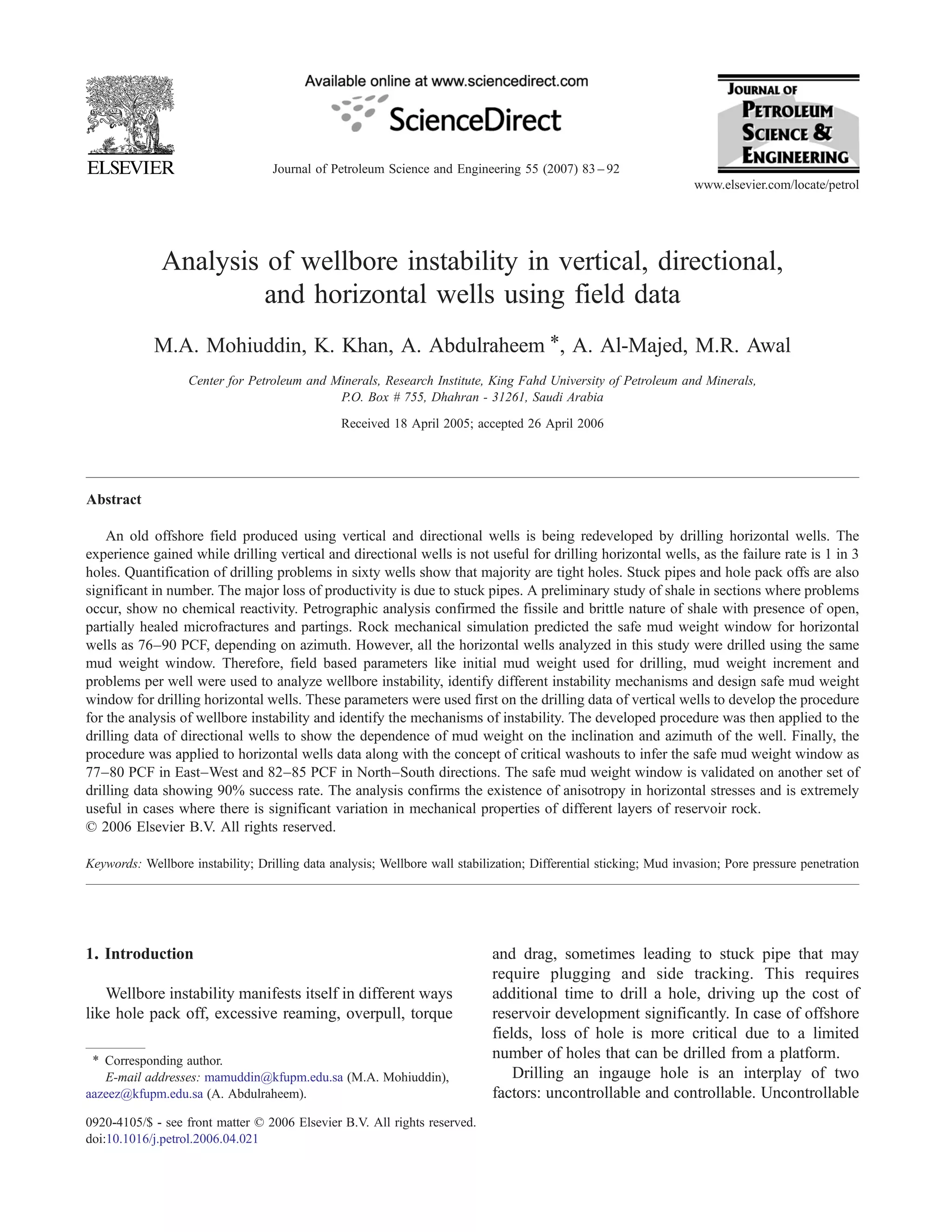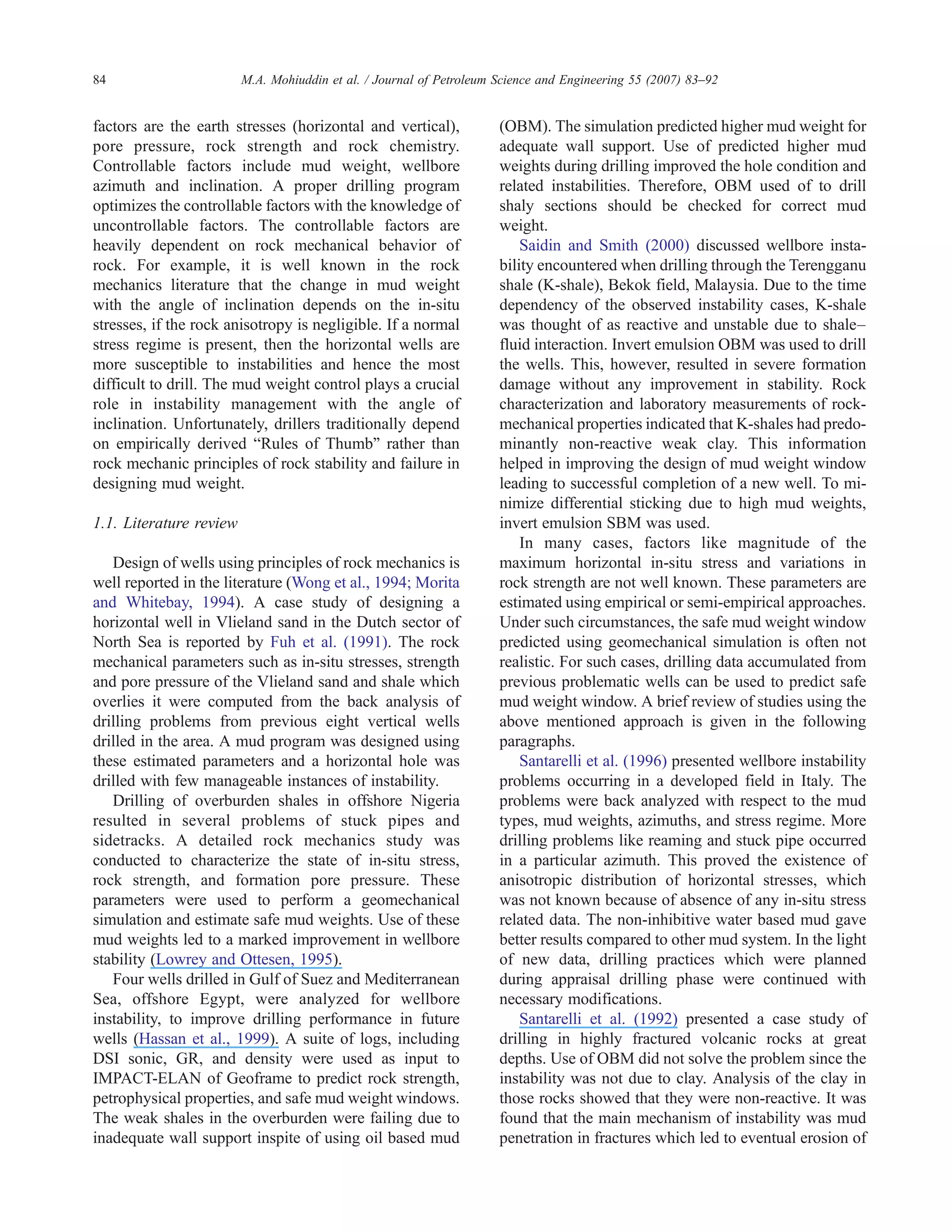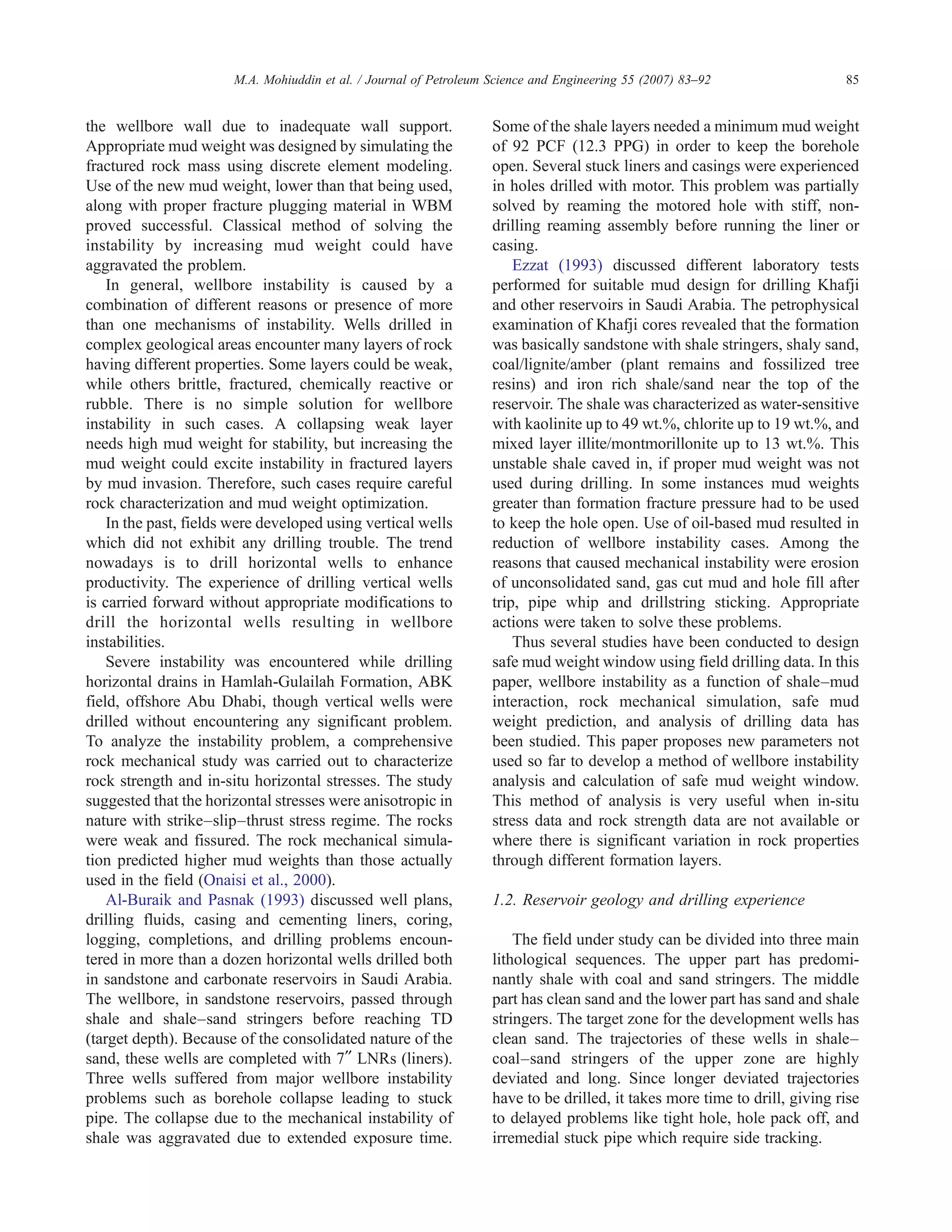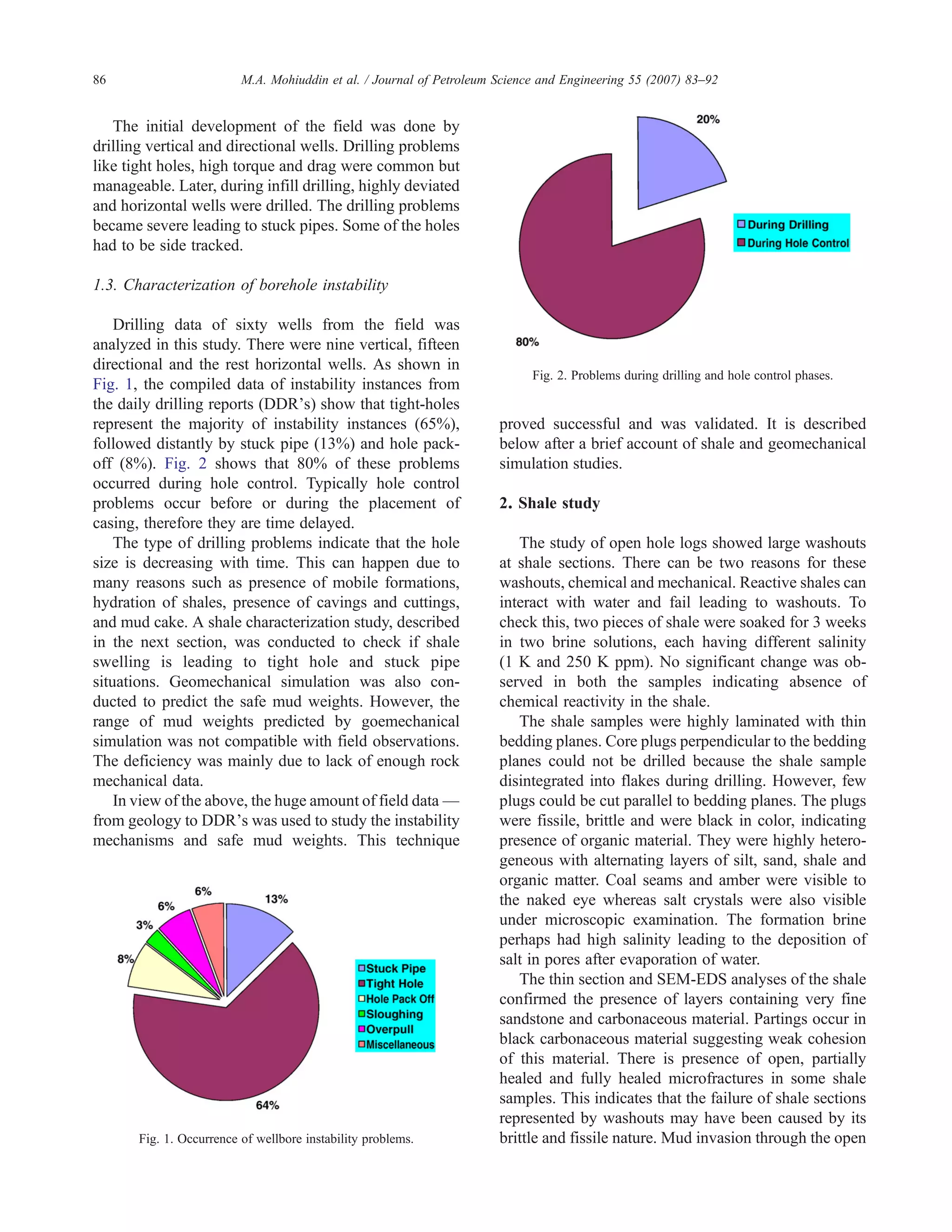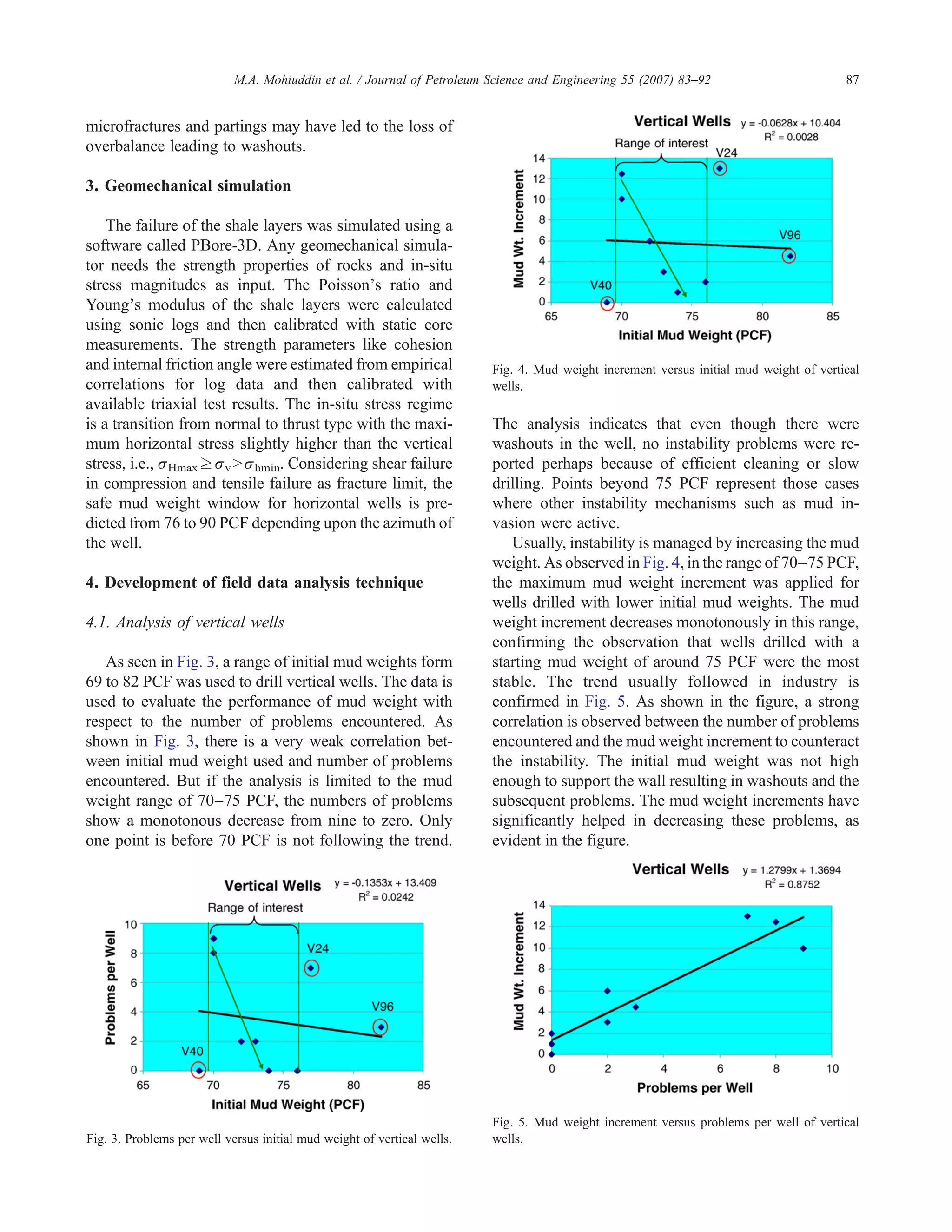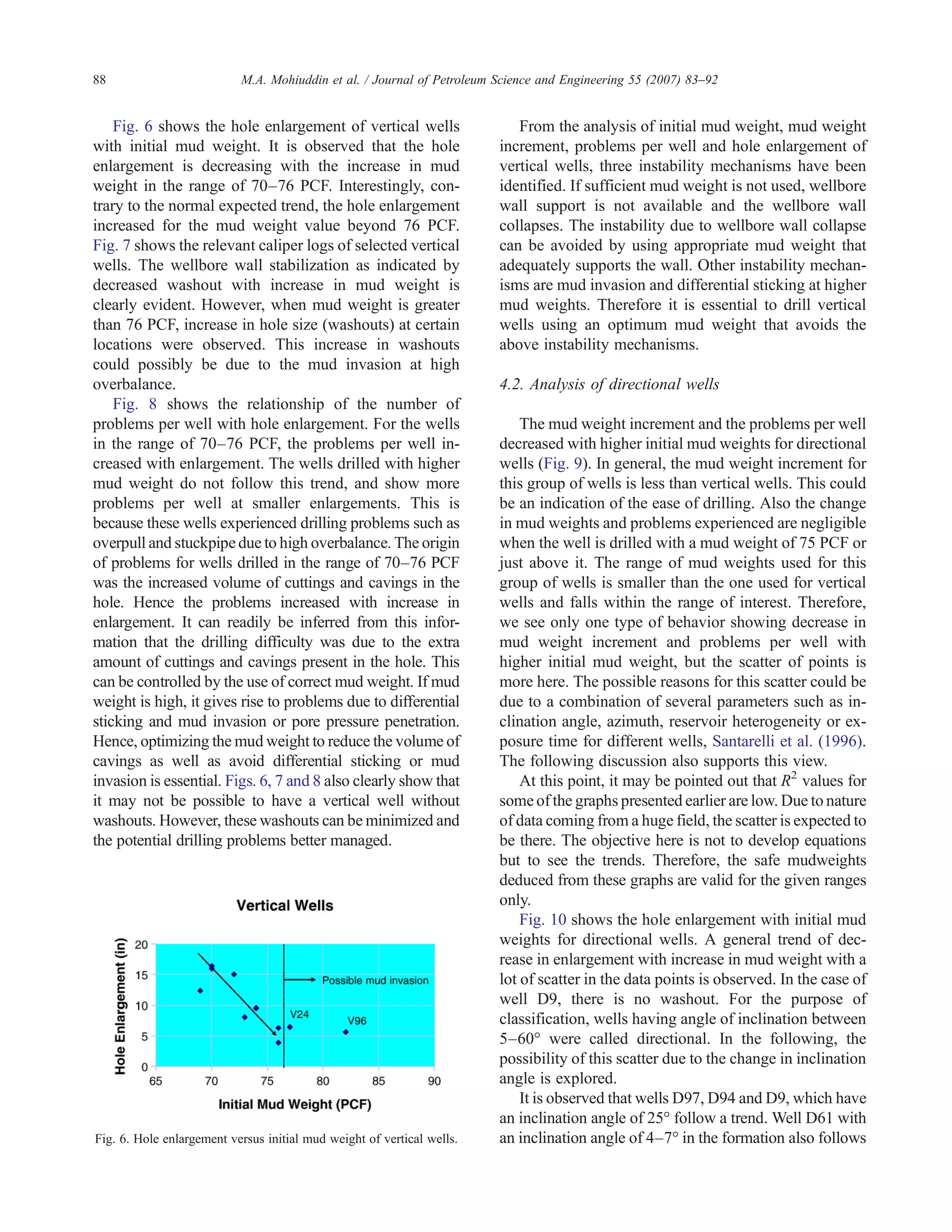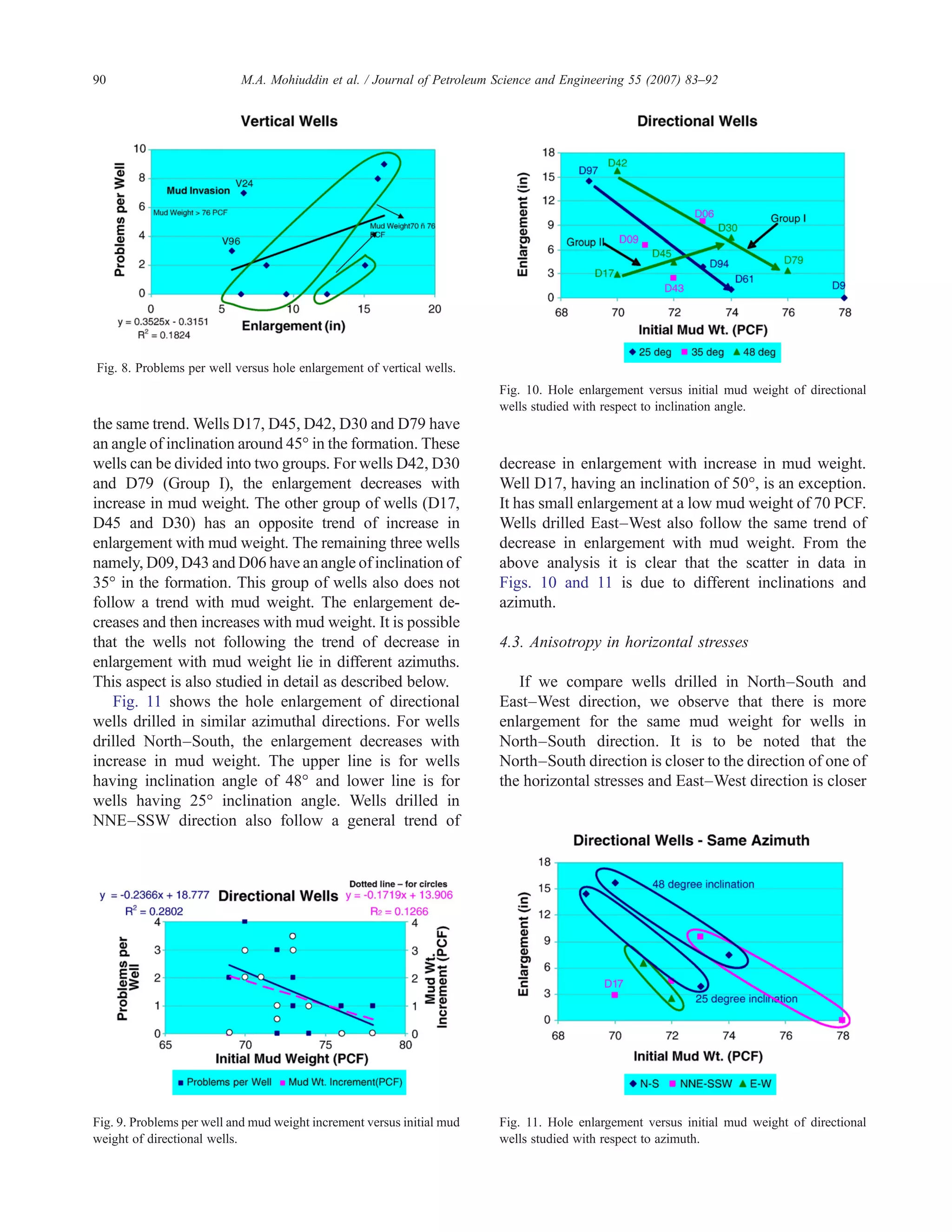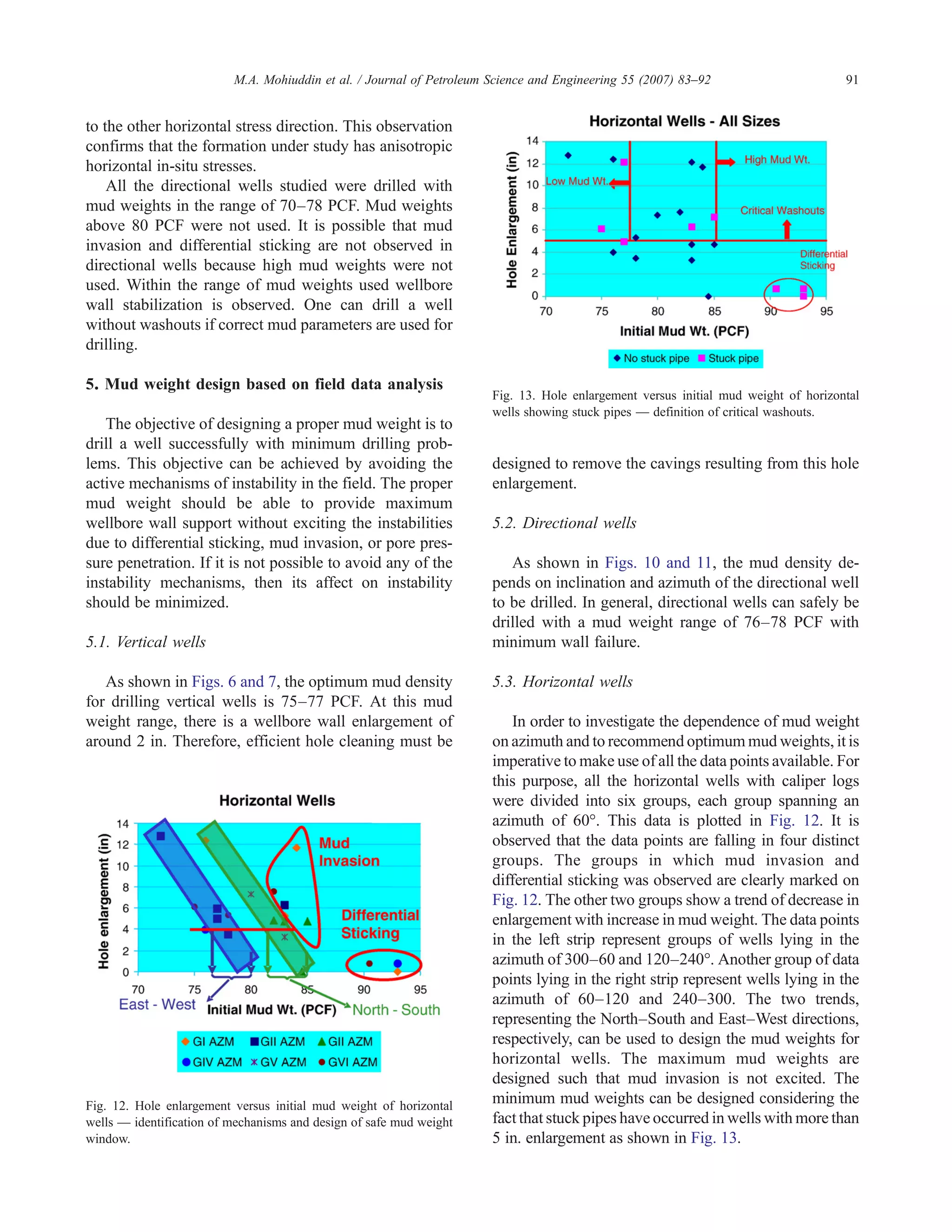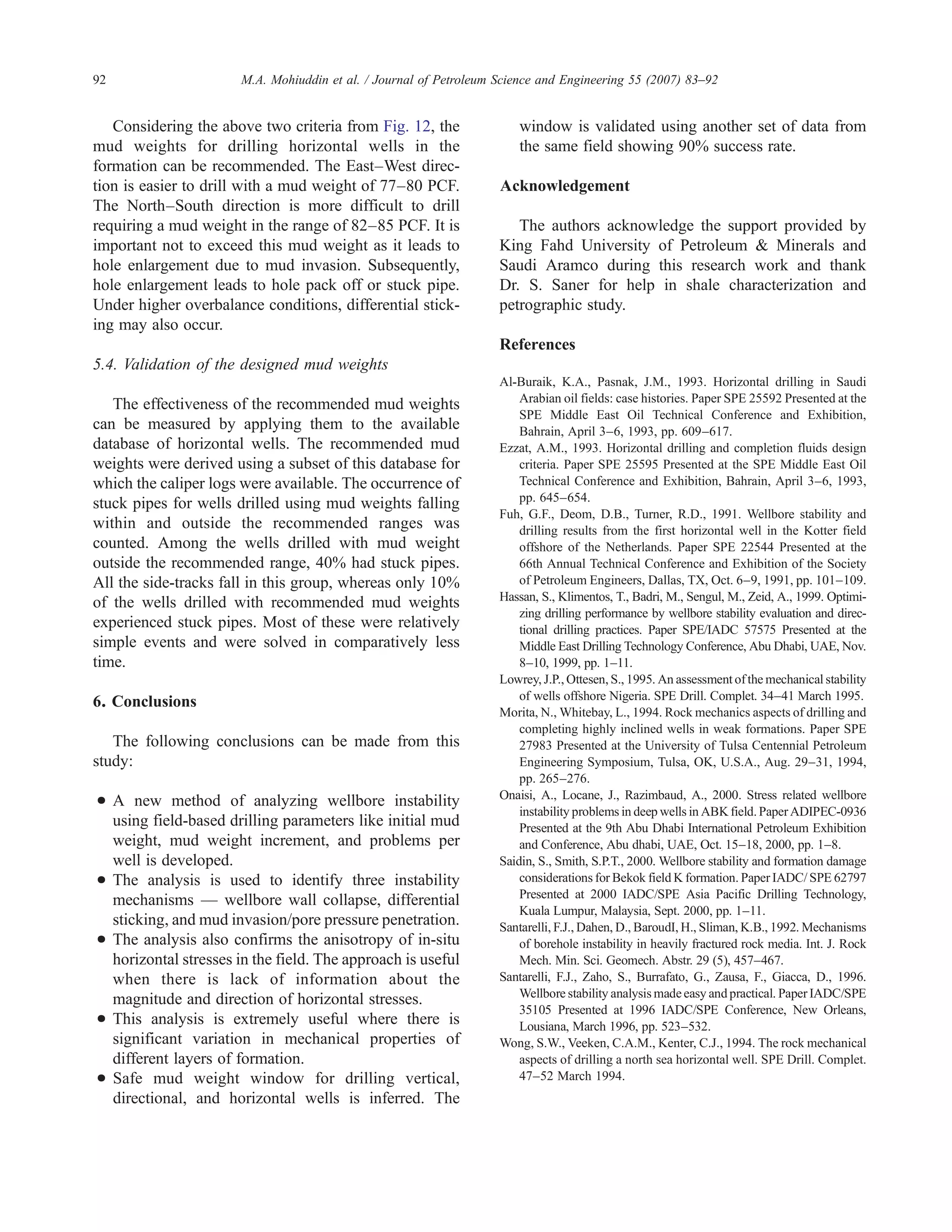This document analyzes wellbore instability in vertical, directional, and horizontal wells using field data from an offshore field being redeveloped by drilling horizontal wells. The analysis identified the major causes of instability in the wells as tight holes, stuck pipes, and hole pack offs. Rock mechanical simulations predicted a safe mud weight window for horizontal wells, but all wells were drilled using the same mud weight. The document then describes analyzing drilling data from the vertical, directional, and horizontal wells to identify instability mechanisms and design optimized safe mud weight windows for each well type and orientation.
